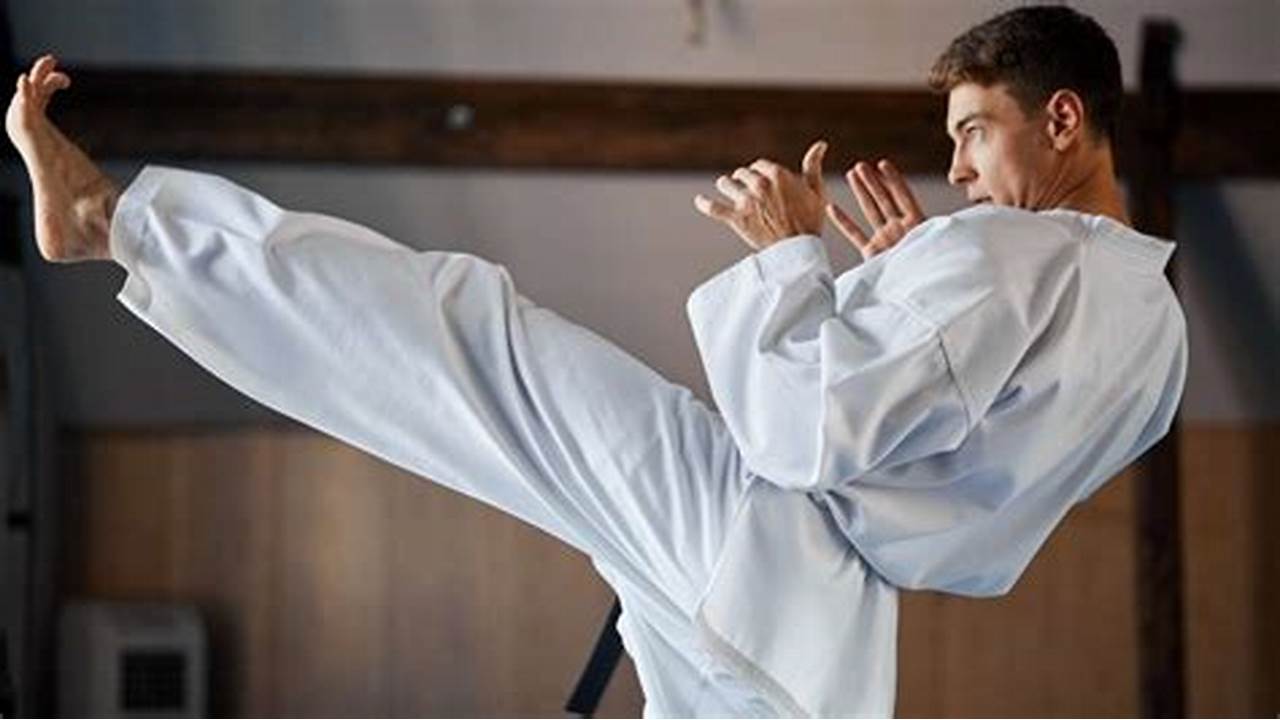How-To
How to learn Karate at Home
Learn how to learn Karate at home with this comprehensive guide. Discover essential steps for choosing a style, setting up your space, mastering fundamentals, and finding online resources.
Learning Karate at home can be an appealing option for many, offering flexibility, cost savings, and the ability to train at your own pace. While a traditional dojo provides direct instruction and sparring partners, a disciplined home practice can lay a strong foundation in the art, especially for beginners. This guide will walk you through the essential steps and considerations for effectively learning Karate from the comfort of your own space.
Understanding the Limitations and Benefits of Home Training
It’s crucial to set realistic expectations for home-based Karate training:
- Limitations:
- Lack of Direct Feedback: No instructor to correct your form, posture, or technique in real-time. This is the biggest drawback.
- No Sparring Partners: You cannot safely practice kumite (sparring) at home, which is essential for understanding timing, distance, and practical application.
- Motivation: It requires high self-discipline to stay consistent without a class schedule or peers.
- Safety: Higher risk of injury if techniques are practiced incorrectly or without proper supervision.
- Benefits:
- Flexibility: Train anytime, anywhere that suits you.
- Cost-Effective: No dojo fees.
- Privacy: Some prefer to learn in private before joining a class.
- Foundational Knowledge: Excellent for learning basics, forms (kata), and improving physical conditioning.
Important Disclaimer: While home training is possible, it should ideally be seen as a supplement to, or a precursor for, formal instruction. If self-defense is your primary goal, direct instruction from a qualified sensei is indispensable. Always prioritize safety, especially when practicing movements.
- Choose Your Karate Style and Find Reputable Online Resources
Karate is a broad term, encompassing many styles. Researching and selecting a style will help you find focused learning materials.
- Research Styles:
- Common styles include Shotokan, Goju-ryu, Wado-ryu, Shito-ryu, Kyokushin. Each has distinct characteristics (e.g., Shotokan for deep stances and linear movements, Goju-ryu for close-range combat and circular movements).
- Watch videos of different styles to see which appeals to you visually and philosophically.
- Identify Reputable Online Resources:
- YouTube Channels: Look for channels run by established dojos or high-ranking instructors with clear, well-produced tutorials. Prioritize channels that emphasize proper form, safety, and traditional principles.
- Online Courses/Dojo Websites: Some dojos offer online courses or instructional videos for a fee. These often provide a more structured curriculum.
- Books and DVDs: Classic instructional books and DVDs can be excellent resources, providing detailed explanations and diagrams.
- Avoid: Quick-fix self-defense videos or those that prioritize flashy moves over fundamental technique.
- Set Up Your Training Space
A dedicated and safe area is crucial for effective home training.
- Clear Space: Ensure you have enough room to extend your arms and legs fully without hitting furniture or walls. An area of at least 6×6 feet (approx. 2×2 meters) is a good starting point, but more is better.
- Stable Surface: Train on a non-slip surface. Bare feet are standard in Karate, but ensure the floor is clean and clear of debris.
- Mirror (Highly Recommended): A full-length mirror is invaluable. It allows you to check your posture, stance, and technique, providing immediate visual feedback you’d normally get from an instructor.
- Optional Equipment:
- Timer: For managing training intervals.
- Punching Bag/Makiwara: For advanced practitioners to develop power and conditioning. (Not for beginners without proper instruction, as incorrect use can lead to injury).
- Comfortable Clothing: Loose, breathable athletic wear. A gi (Karate uniform) can be motivating but isn’t necessary for home practice.
- Master the Fundamentals (Stances, Blocks, Punches, Kicks)
Begin your training with the absolute basics, focusing on precision and correct form over speed or power.
- Warm-Up and Stretching: Always start with a 10-15 minute warm-up (e.g., jumping jacks, light jogging) and dynamic stretches to prepare your muscles and prevent injury.
- Stances (Dachi):
- Start with basic stances like Heiko-dachi (parallel stance), Zenkutsu-dachi (front stance), and Kokutsu-dachi (back stance).
- Focus on proper foot placement, weight distribution, and hip alignment. Use your mirror.
- Blocks (Uke):
- Learn fundamental blocks such as Age-uke (rising block), Gedan-barai (downward block), Soto-uke (outside-in block), and Uchi-uke (inside-out block).
- Practice the full range of motion and correct chambering (the preparatory position for the block).
- Punches (Tsuki):
- Begin with the basic Choku-zuki (straight punch) and Oi-zuki (lunge punch).
- Emphasize correct hand formation (knuckle alignment), hip rotation, and full extension with snap.
- Kicks (Geri):
- Start with Mae-geri (front kick) and Mawashi-geri (roundhouse kick).
- Focus on balance, chambering, proper foot position (e.g., ball of foot for mae-geri), and hip drive.
- Shadow Boxing (Kihon): Once comfortable with individual techniques, combine them into basic sequences. Practice movements with fluidity, as if facing an opponent, but without contact.
- Learn and Practice Kata (Forms)
Kata are pre-arranged sequences of movements that simulate combat situations and are central to Karate training.
- Start with Basic Kata: Most styles have foundational kata (e.g., Shotokan’s Heian series, Goju-ryu’s Gekisai series).
- Break Down Each Movement: Don’t try to learn an entire kata at once. Learn each movement individually, focusing on its timing, direction, and application.
- Memorize the Sequence: Practice the kata slowly, focusing on muscle memory. Use instructional videos to guide you.
- Practice Frequently: Repetition is key to mastering kata. Practice regularly, increasing speed and power only when form is perfect.
- Understand Bunkai (Application): While difficult to learn alone, try to understand the theoretical application of each movement within the kata. Many online resources explain bunkai.
- Develop Physical Conditioning and Discipline
Karate requires strength, flexibility, stamina, and mental fortitude.
- Strength Training: Incorporate bodyweight exercises (push-ups, squats, planks, lunges) to build foundational strength.
- Flexibility: Regular stretching is crucial for kicks and deep stances. Focus on hamstrings, hips, and groin.
- Cardiovascular Endurance: Include cardio activities like jogging, jumping rope, or HIIT workouts to improve stamina for extended practice.
- Consistency: Establish a regular training schedule (e.g., 3-5 times a week) and stick to it.
- Discipline and Focus: Treat your home training like a formal class. Minimize distractions, stay focused on your form, and maintain proper etiquette (e.g., bowing before and after practice, even if alone).
- Patience: Progress in martial arts is slow and steady. Don’t get discouraged by initial difficulties.
- Consider Seeking a Qualified Sensei (Long-Term)
While valuable, home training can only take you so far.
- Benefits of a Dojo:
- Direct Correction: An experienced instructor can immediately spot and correct your mistakes, preventing bad habits and injuries.
- Sparring (Kumite): Essential for applying techniques in a dynamic, unpredictable environment and understanding real-world self-defense.
- Motivation and Community: Training with others fosters discipline, camaraderie, and friendly competition.
- Rank Progression: Formal belts and ranks provide structured goals and recognition.
- Deeper Understanding: A sensei can provide insights into the philosophy and history of Karate.
- How to Find a Dojo:
- Search for reputable dojos in your area.
- Look for certified instructors with genuine credentials.
- Visit a class, observe, and ask questions.
- A good dojo will prioritize safety, discipline, and respect.
By following these structured steps, committing to consistent practice, and understanding when professional guidance is needed, you can successfully embark on your journey to learn Karate at home, building a strong foundation in this rewarding martial art.



















